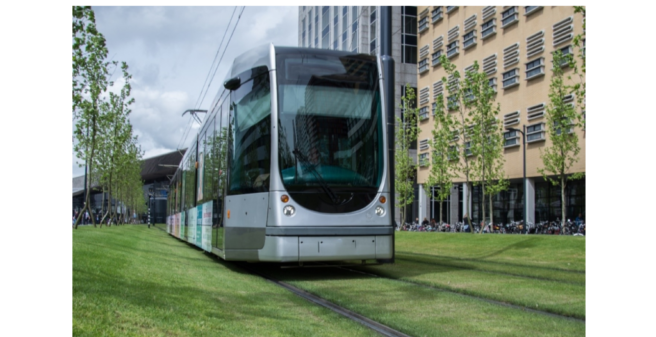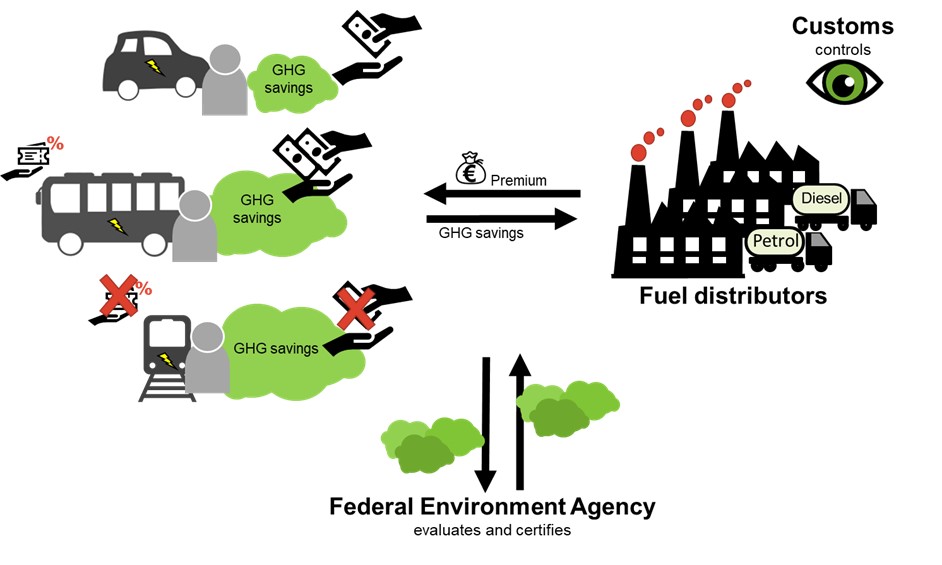
The greenhouse gas (GHG) mitigation quota is an environmental policy instrument that requires distributors of fossil fuels (diesel and petrol) to reduce their average GHG emissions. They can do this by blending lower emission fuels (such as biodiesel) into their fuels or by selling these lower emission fuels separately. They can also pay others to sell the lower-emission fuels on their behalf.
This creates a market for the GHG emission savings generated by using alternative transportation fuels. In addition to synthetic and biogenic fuels, these lower-emission fuels include electricity used to charge electric road vehicles.
Electricity distributors in this context are either operators of public charging stations or owners of electric vehicles. Anyone who owns an electric car can sell the GHG emission savings up to a flat-rate value published by the German Federal Environment Agency. These values range from 2,000 kWh for cars to 72,000 kWh for electric buses and are published for different vehicle classes. Up to €14,000 per year and electric bus can be generated from the sale of GHG emission savings. By trading GHG emission savings, about 10% of the purchase price of electric buses can be recouped within four years.
The additional costs incurred by the petroleum industry as a result of the GHG quota are ultimately passed on to the users of fossil-fuel-powered means of transport in the form of higher fuel prices. Consequently, the GHG quota places a burden on these users while creating financial relief for the use of alternative-powered transportation. However, transport users who use electrified public rail transport do not yet benefit from the GHG reduction quota.

The electricity used in trains, trams and other vehicles does not count against the GHG quota. If this were the case, the revenue generated from selling the GHG emission savings could be passed on to rail passengers. This would create an incentive for transport users to switch to public rail transport and thus travel with lower emissions. From a climate point of view, an extension of GHG emission savings trading to all low-emission fuels used in transport would therefore be advocated. However, it would be important to ensure that the number of permitted low-emission fuels does not become too large. Otherwise the trading prices for GHG emission savings could fall sharply (supply and demand principle) and the environmental policy instrument would lose its effectiveness. On the one hand, this can be countered by reducing the number of permitted low-emission fuel types. For example, biodiesel, which is largely imported from non-Eu foreign countries, could no longer be counted. On the other hand, increasing the GHG quota level that fossil fuel distributors have to comply with can counteract falling trading prices.
The authors:
Constanze Liepold (LinkedIn) and Paul Fabianek (LinkedIn) are PhD students at RWTH Aachen University and work as independent consultants. Their research focuses on the decarbonisation of the building and transport sectors.
23.08.2023
